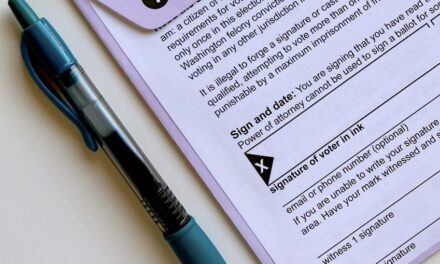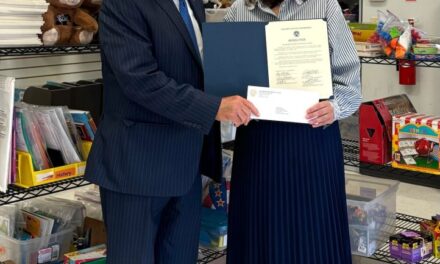
Chances are you know someone who has been a victim of fraud and scams. As a result of the pandemic, fraudsters are finding new ways to find new victims. The good news is that there are simple ways for consumers to stay safe and fight back.
Scammers are always coming up with new ways to get you to part with your money. In a recent Chase survey of 2,000 consumers, 84 percent of survey respondents agreed that scams and scammers have be- come more sophisticated in recent years.
To spot fraud, it’s important to learn more about the most widespread scams, how to prevent them and what to do if you think you may be a victim.

We sat down with Christian Romero, local community manager for Chase in Phoenix, to help you become more aware of the most common scams out there and what steps you can take so that you can protect your information and keep your hard-earned money safe.
How common are fraud and scams?
Fraud cases are unfortunately becoming more prevalent, and more sophisticated. In fact, the FTC revealed that 3.5 million people reported being a victim of fraud or identity theft in 2020, an increase of more than 1.5 million from the previous year. For Black communities, the problem is even worse with nearly half (40 percent) of Black adults being targeted by of online scams and fraud, according to AARP.
What kind of scams exist that we should be aware of and know how to stop them?
While new scams are always popping up, there are several common approaches that keep resurfacing year and year.
Some of the more common scams we’ve encountered and helped our customers fight against may not always seems so obvious at first if you’ve been targeted.
What shocks many of our customers is how far scam artists are willing to impersonate familiar faces, whether that be close relatives or community officials, and also be able to trick you so easily by using your own smart phone against you. So next time you receive a text mes- sage or email on your phone, think twice before you engage.
Here is what I mean:
Fake bank fraud specialist. What they look like: Consumers receive a fraud alert via text message that appears to come from their bank. The message asks them to validate whether they made a certain pur- chase or sent a certain amount of money. After saying “no,” the recipient gets a call from someone claiming to be from their bank’s fraud team. The phone number may even appear to be a real phone number from your bank.
They’ll ask for the customer’s banking username, password or a one-time passcode. Alternatively, they’ll sometimes ask the customer to send money to themselves or a third party to “stop” the fraud or to get their money back. Once the scammer has gained access to a person’s account or convinced them to send money, they usually stop con- tact and the victim’s money is gone.
How to stop them: Unfortunately, scammers target consumers from many banks and they are very good at disguising themselves by “spoofing” or making their phone number appear legitimate. Consumers should never share their banking password, one-time passcode, ATM pin or send money to someone who says that doing so will prevent fraud on their account. Bank employees won’t call, text or email consumers asking for this, but crooks will. If you receive a call like this, hang up and call the phone number on your account statement, the back of your credit or debit card or bank website to verify the authenticity of the request.
Imposter scams. What they look like: Someone will call or email you claiming to be from an organization you trust, like the Internal Revenue Service. They may threaten you by saying that if you don’t pay taxes or fees owed, they’ll bring a lawsuit against you.
How to stop them: If you think there’s truly a possibility that you owe money, don’t pay it to someone who initiates a call or email to you. Instead, hang up and call the organization in question directly.
Grandparent scams. What they look like: You’ll get an email from a grandchild (or other relative) saying that they’re in trouble and need money fast.
How to stop them: Call your relative directly. If you can’t reach them, contact another relative who knows them and may know their whereabouts and circumstances. Whatever you do, don’t send money, purchase gift cards, or share any of your personal information, including your banking username and password. Scammers use threats and try to create a sense of urgency to trick you. Always trust your gut and end communication when some- thing seems off.
What should you do to stop scam artists?
There are steps you can take to protect yourself.
And while we’ve given this advice before in this newspaper, it is worth every cent to repeat in these pages. Here’s what we recommend you do and don’t:
• DO educate yourself on the
most common scams. Fraudsters will use anything to their advantage claiming to be from the IRS, pretending to offer tech support, bait- ing you with prizes or cash winnings the sky’s the limit!
• DO monitor credit score for free with Chase Credit Journey you don’t even need to be a Chase customer to sign up! It will notify you if your data is compromised. Plus, you’ll receive critical alerts that help protect your credit and identity.
• DO review your accounts closely if you believe you may have fallen for a scam. With Chase, you can also set up account alerts so you can be notified of transactions on your account.
• DON’T click on suspicious links on emails or texts unless you’re sure it’s from a credible source. Only access your accounts through the bank’s mobile app or their website.
• DON’T share personal information. Neither Chase nor any other bank will ever ask for your username, password, ATM pin, etc. when reaching out to you. Banks may ask for this information only when you call to discuss your account.
• DON’T transfer money to someone claiming to be from your bank. Banks will never ask to send money via wire, check or other method to “stop or prevent fraud.”
• DON’T pay someone using gift cards, especially when they claim to need them to remove a virus from your computer, stop fraud on your account or to buy plane tickets to come visit you.
What more can you do to protect yourself from fraud and scams?
One of the most effective things you can do to prevent fraud is to regularly monitor your bank and credit card accounts so that you can be on the lookout for signs of un- usual activity.
Your bank’s mobile app can give you easy access to self-service tools that let you track your finances 24/7. If you spot something suspicious, immediately report any concerning activity to your bank.
Many banks, including Chase, also let you set up account alerts to help you detect unusual transactions to your bank or credit card by sending automatic notifications.
If you’re not sure if your bank or financial institution already offers these tools or services, be sure to ask.
If you believe that you may have been a victim of fraud or scams, there’s no need to feel embarrassed or ashamed. It can happen to anyone. What’s most important is to take immediate action.
sponsored content from jpmorgan chase & co.
To learn more about common scams and how to stop scammers in their tracks visit: www.chase.com/security tips. You can also learn tips to identify and avoid financial abuse by visiting: www.chase.com/financialabuse.
The post Scams Can Happen To Anyone The most common ones, How to protect yourself appeared first on Arizona Informant.











